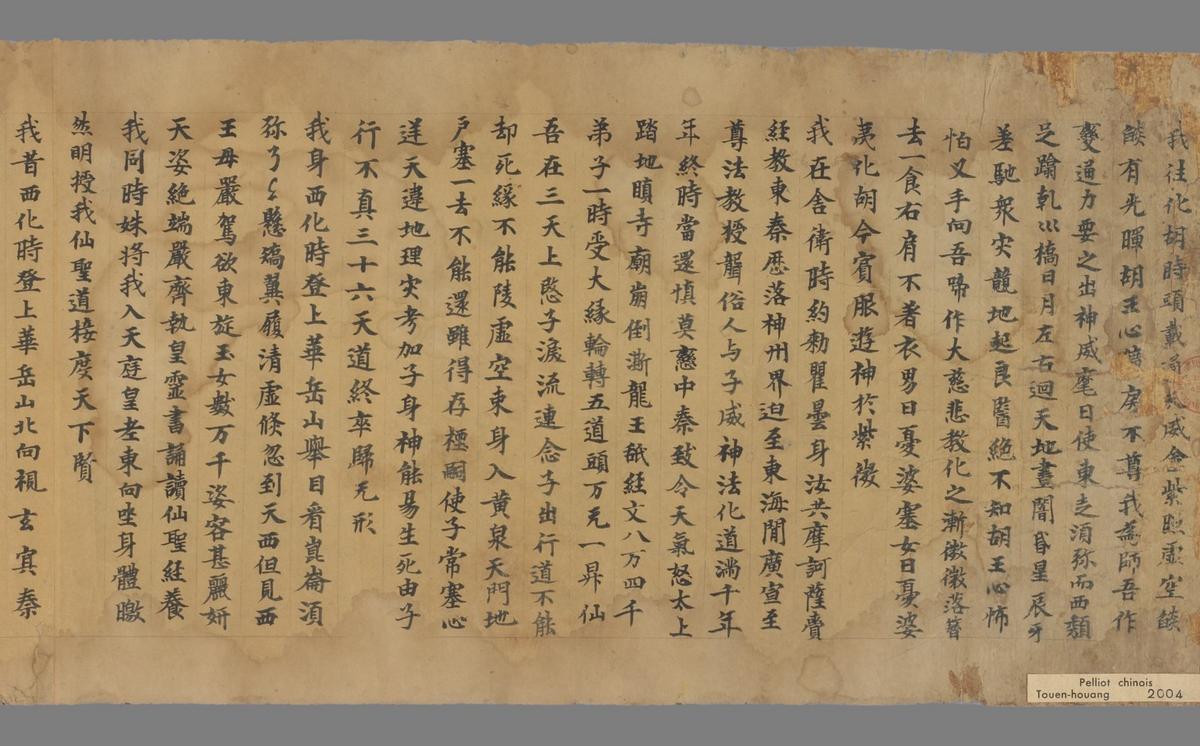Pelliot arrived at Dunhuang in February 1908 and spent three weeks exploring the contents of Cave 17, at the nearby Mogao Caves complex.
Pelliot selected a range of religious and secular texts that he judged to contain new information or to be of linguistic interest, as well as a few statues and paintings. The many secular texts that he brought back have been one of the primary resources for research on the economic, social and legal history of medieval Central Asia and China.
The bulk of Dunhuang manuscripts in the Pelliot collection at the Bibliothèque nationale de France are in Tibetan and Chinese languages, each coming to around 3,000 and over 4,000 items respectively.
The collection has been divided and catalogued in sub-collections or fonds that reflect the language of the materials:
- “Pelliot chinois” is for Chinese manuscripts. The numbering runs from 2001–4099, 4500–5043, and 5522–6038. The missing numbers at the beginning and in-between were reserved for texts in Tibetan and other languages. Some of these remained unused.
- “Pelliot tibétain” is for Tibetan manuscripts.
- “Pelliot sanskrit” is for Sanskrit manuscripts.
- “Pelliot sogdien” is for Sogdian manuscripts. Some were transferred here from Pelliot chinois 2511–3521.
- “Pelliot ouïgour” is for Uyghur texts. Several were also moved from the Chinese and Sogdian fonds.
